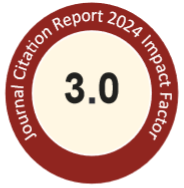Abstract
A micellar electrokinetic capillary chromatography was developed to identify adulterants in rheumatic and analgesic traditional Chinese medicine. This chromatographic technique was carried out using a buffer of (pH 9.0) 0.02M sodium tetraborate and sodium dihydrogenphosphate (contain 0.15 M sodium lauryl sulfate). This method was applied to simultaneously analyze 14 synthetic chemical drugs adulterated in traditional Chinese medicine within 25 minutes. They represented five pharmacological categories: antipyretic analgesics, glucocorticoids, CNS stimulants, muscle relaxants and sedatives, and included: acetaminophen, aminopyrine, bucetin, diclophenac sodium, ethoxybenzamide, indomethacin, ketoprofen, mefenamic acid, phenylbutazone, dexamethasone, prednisolone, chlorzoxazone, diazepam, and caffeine. The recovery of synthetic chemical drugs add to Dwu-Hwo-Jih-Sheng-Tang ranged from 92.1 to 102.5%. This method was used to assess two traditional Chinese medicines sold by distributors of Chinese natural drugs collected by the consumer centers of local health bureaus from Oct. 1991 to Jun. 1992. In sample A, acetaminophen, caffeine, phenylbutazone, prednisolone were found, and their content in each pill were measured at 4.9, 2.2, 26.6 and 1.5mg, respectively. The relative standard deviation ranged between 2.2-3.1%(intraday) and 2.9-5.1%(interday). In sample B, aminopyrine, caffeine and ethoxybenzamide were found, and their content of each pill were measured at 11.8, 5.6. and 3.6mg, respectively. The relative standard deviation ranged between 2.0-3.5%(intraday) and 2.4-4.7% (interday). MEKC was found to be an efficient and sensitive chromatographic technique with which to measure adulterants in samples of rheumatic and analgesic traditional Chinese medicine.
Recommended Citation
Ku, Y.-R.; Tsai, M.-J.; and Wen, K.-C.
(1995)
"Study on the adulterated chemical drugs in rheumatic and analgesic traditional Chinese medicine by MEKC,"
Journal of Food and Drug Analysis: Vol. 3
:
Iss.
3
, Article 4.
Available at: https://doi.org/10.38212/2224-6614.3017

